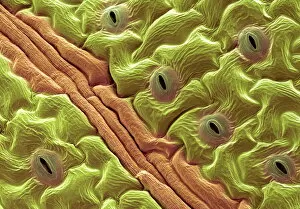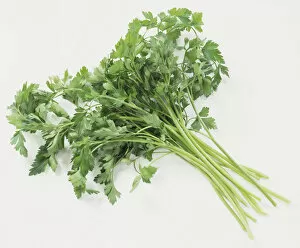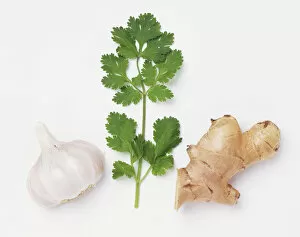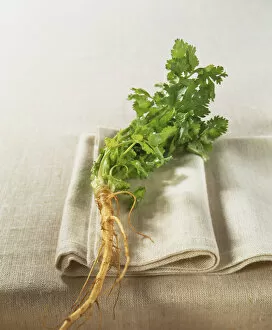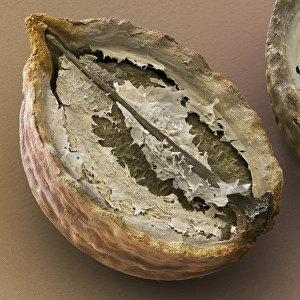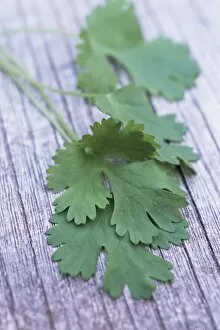Coriandrum Sativum Collection
Coriandrum sativum, commonly known as coriander or cilantro
All Professionally Made to Order for Quick Shipping
Coriandrum sativum, commonly known as coriander or cilantro, is a versatile and aromatic herb that has been used for centuries in various cuisines and traditional medicine. This plant belongs to the Apiaceae family and is characterized by its delicate leaves with leaf pores visible under a scanning electron microscope (SEM). Also referred to as Chinese parsley, coriander offers not only culinary delights but also numerous health benefits and has been recognized as one of the useful and medicinal plants since ancient times. In fact, wood engravings from 1893 depict its significance in herbal remedies. The distinct flavor of coriander adds a refreshing twist to many dishes like couscous with lemon and coriander. Its vibrant green leaves are often harvested from Coriandrum sativum plants growing in nutrient-rich soil. A bunch leaves viewed from above showcases their lushness and beauty. Often confused with parsley due to similar appearance, both herbs have their unique characteristics when it comes to taste profiles and uses - be it using fresh leaves or dried seeds. Speaking of seeds, whole Moroccan Coriander seeds can be seen stored in a metal scoop while ground Coriander rests delicately on a metal spoon in close-up shots. These seeds are widely employed as spices for their warm aroma that enhances the flavors of various dishes. When cultivating this herbaceous plant, teasing out fibrous roots from the base becomes an essential step for optimal growth. This process ensures healthy development throughout its lifecycle. Whether you call it coriander or cilantro, whether you use its leaves or seeds – there's no denying the versatility and charm of Coriandrum sativum. From tantalizing taste buds to providing natural remedies, this herb continues to captivate our senses even after centuries since those wood engravings were published back in 1893.

